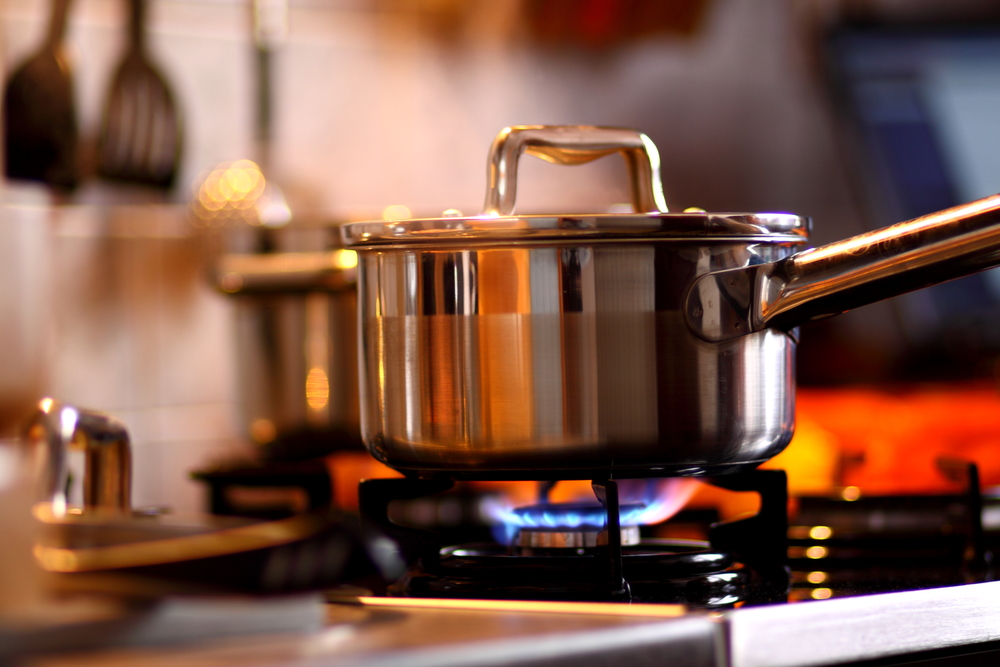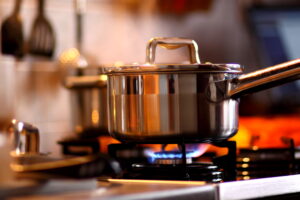You’ve heard that stone counters such as granite, quartz and marble can seriously take the heat in the kitchen, but exactly how much heat does that mean?
For average home cooking, putting hot pans directly on granite countertops will likely never damage them. The Mohs scale measures mineral hardness, and it’s used to determine how heat-resistant stone counters are. Granite gets a 6 on the Mohs scale, whereas diamond is the heartiest mineral and gets a 10.
Granite is really a type of igneous rock, which is naturally formed by extreme heat and then a slow cooling process. It’s created in magma chambers deep in the earth, then rises over several thousand years to the earth’s surface.
Thanks to its formation, granite and many other natural stones have an innate, high resistance to heat. It’s nearly impossible to melt granite, and countertops are often one of the few items to survive a house fire.
Stone Counters: Heat Things Up
Technically, granite can melt at 2,210 degrees Fahrenheit (1,210 degrees Celsius), but that would require taking your stone counters back to a magma chamber! This is the same level of heat needed to melt steel. For comparison, steaks are cooked at about 400 degrees Fahrenheit (200 degrees Celsius).
The hottest you can get a pan on the stove is 1,200 degrees Fahrenheit, which is far from the melting/damage range. You can put this sizzling pan right on the counter and leave it for hours without causing any damage to the countertop.
In extreme instances, granite may soften and discolor, but this is rare. The vast majority of home cooks will never get a pan anywhere near 1,200 degrees. However, hot pans can remove sealants on countertops, which is why it’s still a good idea to use potholders (otherwise, you’ll be resealing more often).
Granite for Cooling Fast
Granite counters are so heat-resistant that they actually draw heat from nearby items. Your dishes, pots, and pans will cool faster if you place them on granite counters. This may sound like a fantastic hack, but granite experts don’t advise you to purposefully use stone counters for fast cooling. Again, it can deteriorate your sealant.
Still, it’s good to know that keeping your cool dishes on granite counters might help them remain chilly longer.
You’re most likely to see damage when granite counters are routinely exposed to temperature swings. Outdoor kitchens are especially vulnerable. If you’re planning an outdoor kitchen, opt for a super-high-density granite countertop designed for outdoor kitchens or harsh usage.
High-density granite counters are available in a variety of colors, patterns and finishes, just like regular granite countertops. Connect with Intermountain Stone & Marble to get more information on granite counters.


